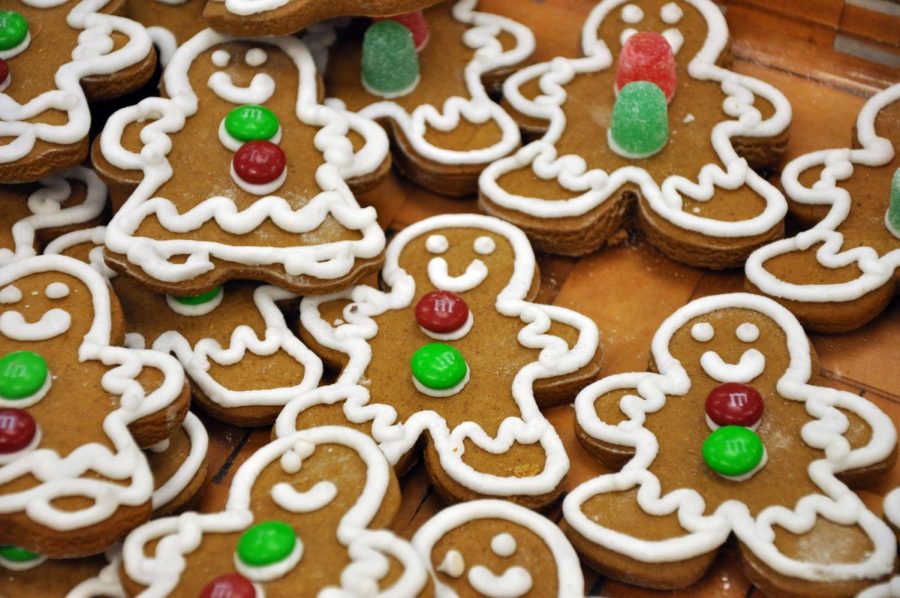Exploring the history behind holiday traditions
Basking in all of their festivities, these Gingerbread men are one of the many holiday traditions we celebrate today. There are traditions we celebrate during the holidays that we are oblivious as to why we celebrate them.
December 19, 2017
For your entire life you may have been celebrating holiday traditions, while being completely oblivious as to why. Common traditions may include mistletoe, Gingerbread men, ornament collecting, spinning the dreidel, or collecting and decorating a Christmas tree. For so very long, people have celebrated some of these things, and thankfully there are explanations as to why.
Mistletoe, surprisingly, is a parasitic plant that feeds off of other trees in the forest and dates all the way back to the ancient Druids. They hung it up in households for good luck and to ward off evil spirits. However, during the holidays, it becomes a symbol of romance. The association to romance dates all the way to back to ancient Norse mythology. The plant would blossom even during the cold, winter season, so it was labeled as a good luck charm for romantic relationships to kiss under it. In the eighteenth century, British servants practiced the act of kissing beneath the mistletoe. It was then labeled as bad luck not to kiss under the mistletoe.
The practice of Christmas tree decoration originated from Germany more than five hundred years ago. They were used to celebrate winter festivals. It slowly spread across Europe and was eventually fully supported in the nineteenth century by Queen Victoria, a British monarch, which really boosted its popularity. There was a newspaper photo of the tree in the Queen’s living room that millions witnessed. By the early twentieth century, nearly every Christian household in the United States and United Kingdom had a tree decorated for the holiday.
During the sixteenth century, Queen Elizabeth I wanted to impress visiting ambassadors, so she made cookies out of gingerbread to look like each visitor. “My family has gingerbread each year around Christmas time and to think that if the Queen never had them made back then, I would have never celebrated this tradition is insane,” said Josh McCorquodale. In addition, the gingerbread house can be credited to the Brothers Grimm, who created the story of Hansel and Gretel.
The dreidel is a gambling toy played with during the Jewish holiday of Hanukkah. It has four letters from the Hebrew alphabet printed on each side of it which translate to “a great miracle happened there,” “there” being Israel. The Jews were outlawed from studying Torah by the Greek Syrians which caused them to study it regardless in secrecy. They would bring the dreidels along with them to make it appear that they were simply playing games.
While many traditions have a rich and interesting historical background, oftentimes traditions can originate from the most simple events. There are traditions that some families exclusively celebrate that others do not. Now when you decorate the tree or make gingerbread men, you will be knowledgeable as to exactly why you are doing it.












